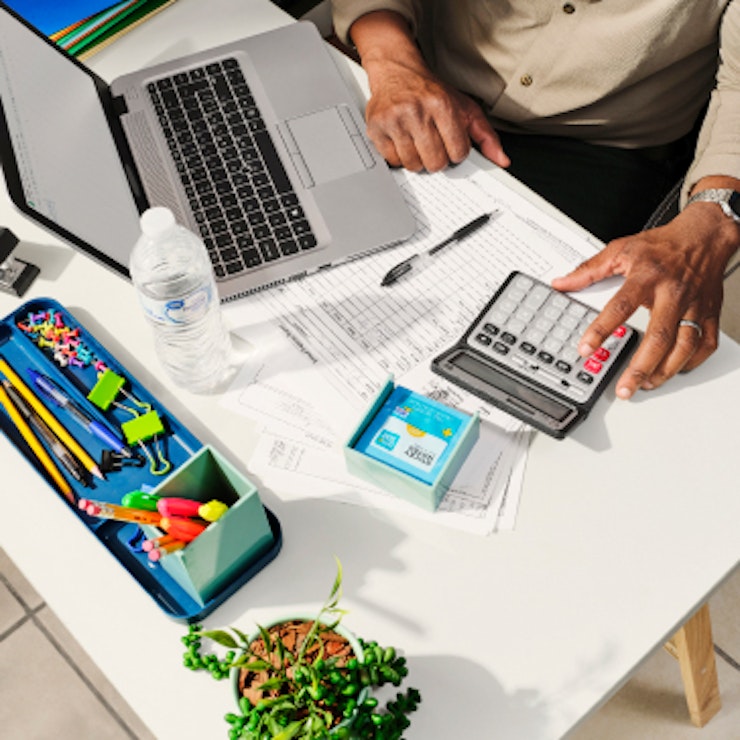
Point-of-sale (POS) equipment requirements differ, and deciding what POS hardware you need for your small business can be challenging. A retailer or restaurant owner may choose an all-in-one POS hardware setup affixed to the counter. Meanwhile, food trucks or mobile vendors may prefer a modular system.
But do you need a receipt printer or cash drawer? Knowing which POS system components are required can help you choose an affordable, scalable solution. Explore the essential setup and best POS hardware for retail, restaurant, and mobile businesses.
What is POS hardware?
Point-of-sale hardware consists of physical devices to process transactions and assist with ordering, inventory, and fulfillment. The core component is a central terminal, like a tablet, all-in-one device, smartphone, or computer. Small business POS setups may include credit card readers, barcode scanners, and receipt printers.


POS hardware needs by business type
When choosing a POS system, consider the differences between general small business options and industry-specific retail or restaurant components. Modular and all-in-one solutions provide POS features and hardware designed for kitchens, counters, and customer use. The following sections break down different POS hardware setups for small businesses.
What hardware do retail stores need?
At a minimum, retailers need a countertop POS terminal with a display, a cash drawer, and a credit card machine. This configuration replaces the clunky cash register systems of the past. Your actual retail POS hardware setup (tablet and card reader versus all-in-one POS) depends on your choice of POS provider.
High-volume restaurants can add [kitchen display system] units to send orders to the back of the house.
Here’s the hardware you need for a retail store:
- Retail POS terminal and display: This is your central hub, whether affixed to the counter or in your hands. It should support your essential inventory and sales processes.
- Credit card reader: An all-in-one retail POS may have an attached payment processing machine or integrate with a separate unit.
- Cash drawer: This should sync with your POS system or receipt printer to open automatically. Retail POS hardware and software vendors offer kits with light or heavy-duty cash drawers.
- Receipt printer: Thermal printers are still the gold standard for high-volume retail sales. Most POS systems, like Shopify, support multiple third-party retail receipt printers, including wired, Wi-Fi, and wireless solutions.
- Barcode scanners: Retailers use these to simplify inventory management or scan items at the point of sale to streamline checkout. Options range from handheld, wireless, and fixed, supporting QR, 1D, and 2D barcodes.
- Customer-facing displays: Tablet-based systems let customers enter loyalty program information and see pricing details as items are scanned. Many have built-in payment readers or integrate with EMV (Europay, Mastercard, and Visa) chip machines.
- Mobile hardware for retail: Growing businesses may add mobile POS solutions to accept payments or assist customers on the floor or at vendor shows.
What hardware do restaurants need?
Restaurant POS hardware includes a main terminal for entering orders and processing payments, which is a must-have for any small business POS setup. However, POS hardware for food trucks and mobile vendors differs from that of full-service restaurants (FSRs) with larger kitchens and more inventory management processes.
Here’s how to choose POS hardware for restaurants or food service businesses:
- Restaurant POS terminal and display: A small cafe or food vendor may need one tablet terminal at the point of sale. FSRs add touchscreen monitor POS hardware based on staff numbers, site size, and order volume.
- Payment processing terminal: Some tablet-based and all-in-one POS system hardware for restaurants have payment readers built-in. Others require a card machine to process credit cards.
- Receipt printer: Some POS providers let merchants skip signatures for credit card purchases. Quick-service restaurants or pop-up vendors with lower-dollar tickets may not need a receipt printer. Other customers prefer physical receipts.
- Cash drawer: The best POS hardware for restaurants integrates with cash drawers. Choose systems that automatically open the drawer only when you initiate a cash purchase.
- Kitchen display system (KDS): High-volume restaurants can add KDS units to send orders to the back of the house.
- Inventory hardware: A mobile POS for small businesses, like food trucks and cafes, may provide app-based support for smartphone-enabled barcode scanners. Tablet and terminal systems integrate with inventory software and barcode hardware to streamline physical stock counts.
- Portable POS hardware for restaurants: These can supplement your primary system, allowing servers to take orders and accept payments at the table or curbside. Counter or tabletop kiosks can save on labor for small, fast-casual restaurants.
CO— aims to bring you inspiration from leading respected experts. However, before making any business decision, you should consult a professional who can advise you based on your individual situation.
CO—is committed to helping you start, run and grow your small business. Learn more about the benefits of small business membership in the U.S. Chamber of Commerce, here.







